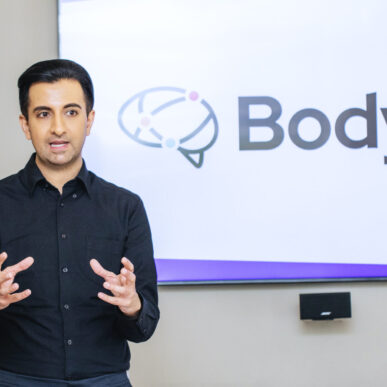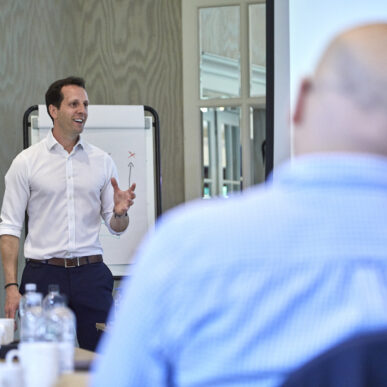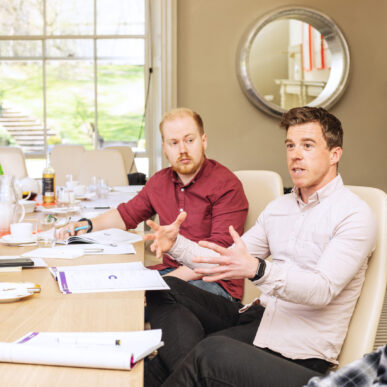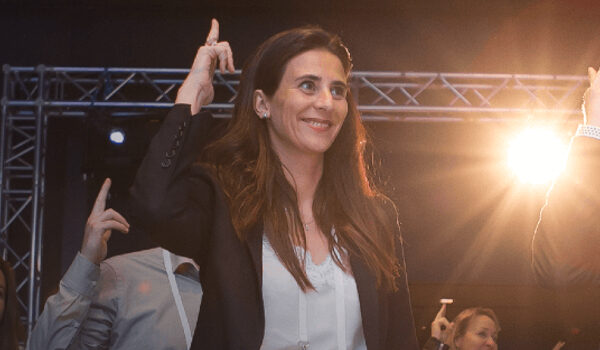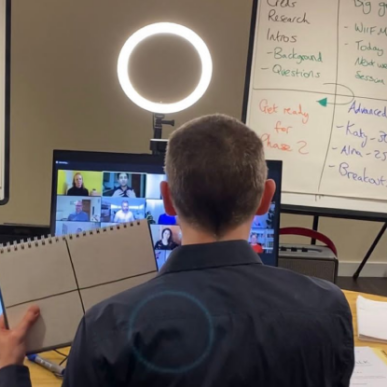What Hollywood Can Teach You About Presentation Skills
If you want to see great examples of presentation skills, look no further than Hollywood.
Tinseltown is the movie capital of America and home to many experienced actors and speakers. Effective presentation skills training encompasses many of the same skills, tips and tricks learned by the stars of Hollywood.
Here are some of our favourite red carpet communication and presentation skills tips.
Know your lines
A classic image of Hollywood is of an actor learning their lines from a script before the big movie shoot. Even if your stage may be a little smaller, it’s still essential to know your content. Some people prefer to learn a script word for word, while others prefer to ad lib through content.
We often tell our clients: ‘Amateurs practise until they get it right, professionals practise until they can’t get it wrong‘.
Whether you’re learning a script or not, knowing your content inside out is essential. You can’t always rely on technology such as a teleprompter. In 2014, director Michael Bay made headlines by walking off stage during a press conference when the teleprompter failed and he couldn’t remember the content. He later explained it as nerves due to lack of preparation time.
People will forgive you for making a mistake. They won’t forgive you for wasting their time through a lack of preparation.
A good way to prepare your content is to ask yourself:
What are the 3 main points that I must make?
How do I want the audience to feel about this message?
By answering these questions, you can ensure that you’ll go on stage knowing exactly what you need to do and say for a confident delivery that will inspire and motivate your audience.
Rehearse for the big moment
One of the best ways to ensure that you know your content is to rehearse it. When it comes to your real presentation, there’s no ‘take two’, so don’t make your live performance the first time you’ve spoken it out loud.
Rehearsing well will give you the opportunity to discover any complicated sentences or stumbling blocks. If you’re using slides, rehearse with them so that you see how your presentation will flow. If you’re going to be presenting face to face, rehearse standing up so that you can practise your gestures. Practise in front of a mirror if you can, or even film yourself.
The more you get used to how your presentation sounds out loud, the better your delivery will be on the day.
Of course, you can’t always do a full rehearsal of every pitch or meeting. What you can do is practice the first 60 seconds, five times, out loud, at the pace you will be speaking. It will only take you 5 minutes.
How to beat presentation nerves
If you feel nervous there are three things that will help you:
- Control and slow down your breathing (to burn adrenaline through oxygen)
- Slow down the pace (to give you time to think)
- Stand centered with your feet shoulder-width apart. This will lower your cortisol (reduce your stress hormone)
For proof of this, you can watch two more Hollywood greats, Jonah Hill and Leonardo Di Caprio, in action.
When Jonah Hill was asked to host Saturday Night Live, he started the show with the pretense of being nervous. He talked with a high breath, high pitch and was swaying from side to side. Then Leonardo DiCaprio comes on, showing how to have gravitas. He stands centered, using stillness, controlled breath and even using the ‘BBC hands’ method we teach.
Start with an exciting opener
The best movies hook us in from the very beginning.
Think of some of the most iconic opening scenes in movies. In the movie, Jaws, we see a young couple heading to the beach after a party. Chrissie decides to go for a dive while her boyfriend dozes on the sand. Suddenly, we see her dragged under the water, screaming, and we’re hooked within three minutes.
In The Dark Knight, we’re thrown into a suspense-filled heist by a gang of men in clown masks. The Lion King hooks us in with a piercing Zulu chant as the red sunrise blazes across the savannah.
When you’re giving a presentation, it’s equally as important to hook people in at the very start. Use storytelling (see below) and vivid descriptions to help fire up people’s imaginations. It’s your opportunity to excite your audience, motivate them and get them sitting on the edge of their seats.
Create an emotion
The reason you are there giving a presentation is to tell people how to feel about the information you’re sharing. If you were just there to churn out facts or jargon, you might as well just send it as an email!
Using emotional language in your presentations helps to engage your audience more deeply. As human beings, we are much more influenced by emotions than we are by facts and figures. By bringing emotions into your presentation, you can make your content more memorable, lasting much longer than the time you’re on stage
Think about how you want your audience to feel during different parts of your presentation. Perhaps you want them to feel inspired, excited or motivated? Maybe you want them to feel confident or reassured. There are times when it may be useful for people to feel a sense of urgency or concern.
When you know how you want people to feel, you can curate your content and choose your language more carefully. You should also ensure that your body language is congruent with the emotional message you’re trying to deliver. All of this will help to create strong emotional reactions in the minds of your audience, and a more compelling presentation as a result.
Don’t be scared to improvise
Sticking rigidly to a script is not always the best way to deliver your presentation. If you find that your audience is disengaged or your content isn’t landing in the way that you hoped it would, don’t be afraid to improvise and adapt. After all, your audience doesn’t know what you were planning to say, so if you go off script, nobody will be any the wiser.
This even happens in Hollywood. Some of the most iconic lines from movie history were actually ad-libbed.
- In Jaws, Roy Scheider ad-libbed the famous line “You’re gonna need a bigger boat.”
- Harrison Ford as Han Solo replied with “I know” to Princess Leia’s “I love you.”
- Humphrey Bogart ad-libbed the line “Here’s looking at you, kid.”
If you know your content well enough, you’ll be prepared enough to improvise around it. Gauge what your audience needs and take it from there.
Tell a story
Stories are essential for sharing information, but they are also a key tool in influencing people’s feelings and conveying emotion.
Storytelling brings clarity to your message and helps people remember information more easily. You can achieve a greater bond with your audience, elevating your brand and its value.
The ‘Master of storytelling’ in Hollywood is Robert McKee, who has spent more than 30 years teaching storytelling techniques. His former students include 63 Academy Award winners and 164 Emmy winners. He is also the author of the screenwriters’ bible, Story. In the video above, he speaks to Alina about how to master storytelling and why it’s so important.
Think about the story that you’re going to tell to your audience to captivate and delight them, and keep them listening all the way through to the end.
Leave your audience wanting a sequel
When you come to the end of your presentation, you should make sure you answer the ‘what next?’ question.
Don’t simply get to the end and say ‘Ok, that’s it, thanks for listening.’ Your audience needs to know what to do next.
In Hollywood, audiences love a sequel. At the end of the first Back To The Future movie, we see Doc crashing back onto Marty McFly’s driveway, insisting they have to go ‘back to the future!’ Although the ending was initially intended to be a joke, the audience loved it so much that they demanded a sequel to continue the story.
Let your audience know what will happen next. What should people do with the information you’re sharing with them? What will the nex steps be? How can people find out more? Don’t leave this implied: be explicit and clear so that people will join you for the next chapter.
Coaching can help
So for your next important meeting, create your impact. Remember the three key points you need to make, consider how you need people to feel about them, then control your delivery.
That way if the tele-prompter breaks, the projector explodes, or you leave your notes in the car, you can still do your job.
Presentation skills training is an effective way to help improve your meetings and communications. Whether you want to improve your storytelling, stage presence or confidence in front of an audience, we can help. Get in touch with us today.
Related articles
The Power of the Pause – the secret to making your presentations more impactful
Improve your presentation skills








